Within the realm of our subconscious minds lie a world of unexplored possibilities and hidden meanings. Often obscured by the veils of slumber, our dreams offer a unique glimpse into the labyrinthine corridors of our thoughts, desires, and fears. Like a secret code waiting to be deciphered, dreams hold the power to transport us beyond the boundaries of our waking reality, weaving intricate tales that hold significance only to the beholder.
Yet, it is not just dreams themselves that hold intrigue; rather, it is the abstract exploration of their significance that captivates the curious observer. Dream interpretation, much like peeling back layers of a cosmic onion, allows us to unravel the enigmatic symbolism embedded within our nocturnal visions. It is through this process of deciphering that we can gain insight into our own psyches, forging connections between the conscious and unconscious realms.
In this ethereal journey of self-discovery, paper becomes an unexpected protagonist. Seemingly mundane in its everyday existence, paper takes on a transformative role as it becomes the medium for capturing our dreams. Through the act of documenting our dreams and the subsequent interpretation, we embark on a voyage of self-reflection and introspection, harnessing the power to unearth hidden truths and ignite personal growth.
Unveiling the Concealed Significance of Documentation
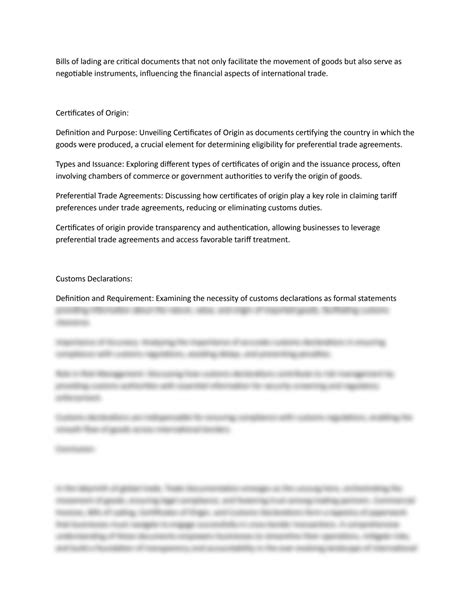
In this section, we delve into the intricate world of paperwork, exploring its hidden depths and uncovering the underlying meaning that lies beneath the surface. Through careful analysis and interpretation, we aim to unravel the secrets and symbolism embedded within these seemingly mundane documents.
By examining the content, structure, and context of paperwork, we can start to decipher the messages they convey. Each line, word, and punctuation mark holds significance and can provide valuable insights into the intentions, emotions, and perceptions of the individuals involved. Through this process of exploration, we can discover a fascinating dimension of human communication and expression.
- Unearthing the Symbolic Language: Behind the monotonous rows of text and numbers, lies a hidden language – a realm of symbols and metaphors waiting to be decoded. We delve into the meaning behind commonly used symbols, such as signatures, stamps, and seals, as well as explore the significance of specific colors and fonts employed in different types of documents.
- Unspoken Stories: Each document tells a story, whether through the content it presents or the way it is presented. We explore how personal experiences, cultural influences, and societal norms shape the documentation process, allowing us to gain a deeper understanding of the individuals and communities involved.
- The Power of Context: Investigating the significance of the context in which paperwork is created and interpreted. We analyze how the purpose, audience, and timing impact the overall meaning and reception of documents, offering a fresh perspective on the dynamics of communication.
- Mind over Matter: Examining the psychological dimensions of paperwork, we uncover how our subconscious mind influences our interpretation of these documents. From dreams to intuition, we explore the ways in which our inner thoughts and emotions can shape our understanding of paperwork.
Through this journey of discovery, we aim to challenge the conventional notion of paperwork as a mere administrative tool. Instead, we invite you to join us in unlocking the hidden meaning behind these documents, revealing the rich tapestry of human communication and understanding that lies within.
Unraveling the Psychology of Understanding
Exploring the intricate workings of the human mind and its ability to comprehend and interpret information has long been a fascinating subject of study. In this section, we delve into the psychology of understanding, seeking to grasp the underlying processes that shape our interpretation of the world around us.
One fundamental aspect of interpretation is our inherent inclination to make sense of the information presented to us. This process involves the extraction of meaning from various sources, including language, gestures, and symbols. Through an intricate web of cognitive processes, we navigate through this sea of information, seeking to unravel its significance and make it intelligible.
A key feature of interpretation is its subjective nature. Each individual brings their unique set of experiences, biases, and cultural backgrounds to the process, creating a lens through which information is filtered. This subjectivity gives rise to a diverse range of interpretations, highlighting the complex and multifaceted nature of human understanding.
Additionally, the field of psychology recognizes the role of perception in interpretation. Our perception of the world is shaped by sensory information, which is then processed and organized into meaningful patterns. This interplay between perception and interpretation further influences how we make sense of the information presented to us.
| Understanding Processes | The Role of Perception |
| Subjectivity in Interpretation | Unveiling Cognitive Biases |
How the Art of Explanation Shapes Our Perceptions
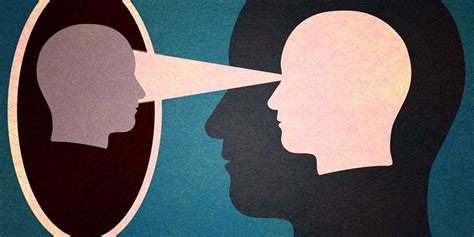
In the realm of understanding, the power of interpretation plays a vital role in shaping our perceptions. An individual's ability to convey and comprehend information directly affects how they perceive and make sense of the world around them. By employing different techniques and approaches, the art of explanation enables us to bridge gaps in understanding, uncover hidden meanings, and challenge preconceived notions.
Table: Examples of Interpretation Techniques
| Technique | Definition | Impact |
|---|---|---|
| Analytical | Breaking down complex ideas into smaller, manageable components to facilitate understanding | Enhances clarity and comprehension |
| Metaphorical | Using symbolic comparisons to convey abstract or complex concepts in a relatable manner | Elicits emotional connections and aids in retention |
| Cultural | Contextualizing information based on cultural norms and values to ensure accurate interpretation | Fosters inclusivity and avoids misunderstandings |
| Persuasive | Presenting information in a compelling and convincing manner to sway opinions or influence actions | Affects decision-making and behavior |
By understanding and employing various interpretation techniques, we have the power to shape the way others perceive the world. The art of explanation allows us to transcend language barriers, challenge biases, and foster meaningful connections. Ultimately, our ability to effectively interpret and explain information has a profound impact on our individual and collective understanding of the world around us.
Exploring the Diversity of Meanings: A Journey into Cultural Interpretations
In this section, we delve into the intriguing world of cultural variations in interpretation. We embark on a fascinating exploration of how different cultures perceive and understand the meanings behind various symbols and signs, without explicitly focusing on dreams, paperwork, power, or interpretation itself. Through this exploration, we will gain deeper insights into the diverse lenses through which individuals from different cultural backgrounds view and interpret the world around them.
The Art of Symbolism in Document Processing
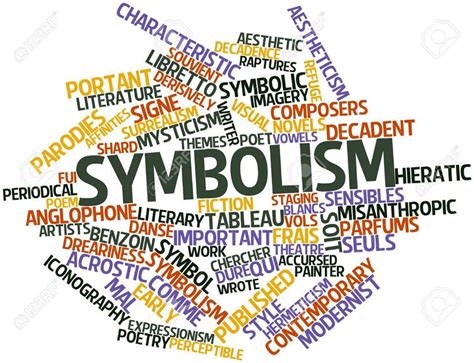
Within the intricate world of paperwork, lies a hidden realm of symbolism that has the power to transform mundane documents into vessels of deeper meaning. This art of symbolism allows us to unravel stories, emotions, and ideas that are embedded within the seemingly ordinary lines and words found on a sheet of paper.
Just like a painter expresses their creativity through brushstrokes and colors, individuals who engage with paperwork can also tap into their artistic side by deciphering the hidden symbols present. These symbols serve as a language of their own, speaking to the observant and providing insights into a variety of facets such as history, culture, and personal experiences.
Symbolism in paperwork can take on various forms, ranging from the choice of fonts and typefaces to the arrangement of paragraphs and sections. Each decision made during the process of creating, organizing, and presenting information holds the potential to convey a deeper message, oftentimes beyond what is explicitly written.
- The use of specific colors can evoke emotions or represent certain ideas. For example, blue may signify trust and professionalism, while red can evoke a sense of urgency or importance.
- Headers and footers can act as symbols of authority or hierarchy, guiding the reader's attention and establishing the overall structure of the document.
- Formatting choices such as bullet points or numbered lists can convey the level of importance or priority assigned to different pieces of information.
- The deliberate use of whitespace can create a sense of clarity or emphasize the significance of specific sections or passages.
The art of symbolism in paperwork goes beyond aesthetic choices; it is a way of storytelling, of breathing life into the otherwise mundane. By embracing the power of interpretation, we unlock a world of possibilities, shedding light on hidden narratives and allowing ourselves to appreciate the intricacies of the documents that surround us.
Unveiling the Hidden Meanings: Exploring the Subconscious through Paperwork
Embark on a captivating journey into the depths of the human mind as we delve into the intriguing realm of paperwork interpretation. Without relying on explicit definitions, we will embark on a quest to unravel the subconscious messages hidden within the mundane documents that clutter our daily lives. Through careful analysis and keen observation, we will discover the rich tapestry of symbolism and meaning that lies beneath the surface of seemingly ordinary paperwork.
Within the intricate dance of lines and letters, a world of untapped knowledge awaits. Each form, contract, or receipt holds a story waiting to be narrated, waiting to reveal secrets long forgotten or buried in the recesses of our minds. By peering into the subtleties of these seemingly banal papers, we can unlock windows into our deepest desires, fears, and aspirations.
As we embark on this exploration, it is crucial to acknowledge the power of introspection and self-reflection. By examining the paperwork that occupies our physical and mental spaces, we can gain a renewed understanding of our own identities and motivations. What lies hidden behind those scribbled notes? What emotions and memories have been etched onto the pages, forever imprinted in the ink?
This journey into the subconscious through paperwork interpretation is not a simple task. It requires honing the skill of observation, learning to navigate the intricacies of metaphor and symbolism. Each stroke of the pen, each carefully chosen word, contributes to the intricate web of meaning that lies within. By training our minds to think beyond the surface level, we can unlock the door to a deeper understanding of ourselves and the world around us.
In our exploration, we will encounter the power of words and the weight they carry. We will question the intention and purpose behind the meticulous organization of paperwork, examining the impact it has on our psyche and our perception of reality. Through this introspective journey, we will harness the power of interpretation to shed light on the enigmatic realm of paper-based communication.
In conclusion, as we embark on this fascinating exploration of paperwork interpretation, we must approach it with an open mind and a willingness to dive into the depths of the subconscious. Each document we encounter has the potential to provide profound insights into ourselves and the hidden aspects of our lives. So, let us gather our pens and magnifying glasses, for through the power of interpretation, the hidden meanings of paperwork will be revealed.
The Impact of Analysis on Decision-Making
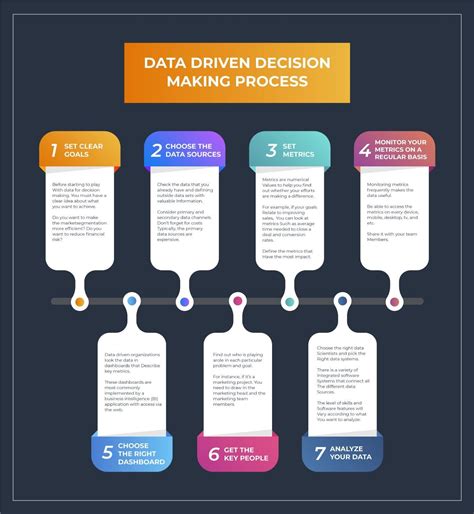
When considering the effect of interpretation on decision-making, it becomes apparent that the way in which information is analyzed and understood can significantly influence the choices we ultimately make. The process of interpretation involves extracting meaning and insights from various data sources, allowing us to derive a deeper understanding of the subject matter at hand.
Interpretation holds immense power as it enables us to transform raw data and information into actionable knowledge. Through careful analysis and interpretation, we are able to identify patterns, draw connections, and uncover insights that may not be immediately apparent. This ability to interpret and extract meaning is what empowers us to make informed decisions and take strategic actions based on our understanding of the situation.
The impact of interpretation on decision-making extends beyond simple analysis. It involves critical thinking, evaluating multiple perspectives, and considering the potential consequences of different choices. Interpretation requires us to assess the credibility and reliability of the information at hand, as well as the context in which it is presented. By considering these factors, we are able to form a holistic view of the situation, allowing us to make well-informed decisions.
Furthermore, interpretation is a dynamic process that shifts and evolves as new information becomes available. It involves constantly reassessing our initial understanding and adapting our interpretations based on new insights. This iterative approach to interpretation ensures that our decision-making remains flexible and responsive to changing circumstances.
In conclusion, the influence of interpretation on decision-making cannot be underestimated. It is through the process of interpretation that we are able to transform raw data into meaningful insights and knowledge, enabling us to make informed, strategic decisions. By recognizing the impact of interpretation and actively engaging in a thoughtful analysis of information, we empower ourselves to navigate complex situations and make choices that align with our objectives.
Unlocking Creativity and Fostering Innovation through the Art of Interpretation
In the realm of original thinking and groundbreaking ideas, interpretation emerges as a powerful tool that paves the way for creativity and innovation. By delving into the intricate layers of meaning and exploring new perspectives, individuals can unlock their creative potential and catalyze fresh thinking. Through the art of interpretation, opportunities for innovation and transformative change arise, rewriting the narrative of possibilities.
- 1. Illuminating Multiple Dimensions: Interpretation enables a multi-faceted exploration, allowing individuals to uncover hidden nuances and intricate details. Rather than accepting a singular interpretation, this approach encourages the examination of divergent viewpoints, triggering a cascade of creative possibilities that break away from conventional frameworks.
- 2. Embracing Subjective Experience: In the realm of creativity and innovation, subjective experiences hold tremendous value. Interpretation acknowledges and encourages the embrace of individual perspectives, recognizing that unique interpretations can lead to novel ideas. By valuing diverse insights, interpretation acts as a catalyst for unlocking untapped creative potential.
- 3. Bridging Connections: Interpretation possesses the power to forge connections between seemingly disparate concepts and ideas. By investigating connections that exist beyond the surface level, individuals can uncover unexpected correlations and create innovative solutions that bridge disciplinary boundaries.
- 4. Fostering Collaborative Exploration: Interpretation thrives in collaborative environments, where the exchange of ideas enhances the richness and depth of interpretation. Through collective interpretation, individuals can build upon each other's insights, amplifying the creative energy and igniting a chain reaction of innovative thinking.
- 5. Challenging Assumptions: Interpretation challenges the status quo by questioning assumptions and uncovering implicit biases. By dismantling preconceived notions, interpretation allows for the emergence of fresh perspectives, fostering a climate of experimentation and pushing the boundaries of innovation.
In essence, interpretation serves as a beacon guiding individuals towards uncharted territories of creativity and innovation. By embracing the art of interpretation, society can redefine what is possible, inspiring breakthroughs and mobilizing change in an ever-evolving landscape.
The Vital Role of Interpretation in Effective Communication
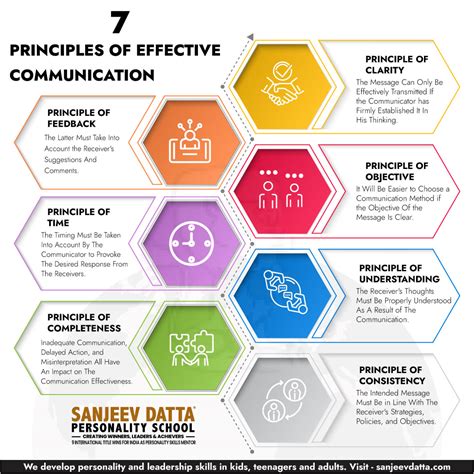
In the realm of communication, interpretation plays a pivotal role in ensuring the smooth exchange of ideas, thoughts, and information. It serves as the bridge that connects individuals from diverse backgrounds and enables them to grasp the true essence of a message. Interpretation goes beyond the literal meaning of words and involves the nuanced understanding of context, non-verbal cues, and personal experiences. It facilitates effective communication by helping to bridge potential gaps in language, culture, and perspective, enhancing mutual understanding and fostering productive dialogue.
Enhancing understanding: Interpretation allows individuals to comprehend the intended meaning of a message in a manner that resonates with their unique worldview. It acknowledges that a single statement or concept can elicit different interpretations, influenced by personal beliefs, cultural norms, and prior experiences. Effective interpretation guides individuals towards a shared understanding by unraveling the complexities inherent in communication, leading to more meaningful interactions.
Bridging cultural differences: Culture serves as a lens through which individuals perceive the world, shaping their beliefs, values, and behaviors. Interpretation plays a crucial role in navigating cultural differences by facilitating the exchange of ideas between individuals from diverse backgrounds. It requires practitioners to utilize their linguistic and cultural expertise to bridge potential gaps in understanding, enabling effective communication across boundaries and fostering cultural appreciation.
Non-verbal cues: Communication extends beyond the spoken or written word. Interpretation encompasses the understanding of non-verbal cues, such as body language, facial expressions, and tone of voice, that communicate emotions, attitudes, and intentions. The ability to interpret and respond appropriately to these non-verbal cues enables individuals to grasp the true meaning behind a message, enhancing effective communication and preventing misunderstandings.
Contextual comprehension: Interpretation is deeply intertwined with the context within which communication takes place. It involves deciphering underlying meanings, hidden implications, and cultural references that may not be overtly stated. An effective interpreter recognizes the importance of context and utilizes it to facilitate accurate and comprehensive understanding among participants, ensuring that the intended message is appropriately conveyed.
In summary, interpretation plays a vital role in effective communication by enhancing understanding, bridging cultural differences, interpreting non-verbal cues, and comprehending the contextual nuances of messages. Its interdisciplinary nature necessitates the skills of skilled practitioners who can navigate the complexities of language, culture, and individual perspectives to foster meaningful and productive communication. By promoting mutual understanding and empathy, interpretation strengthens connections between individuals and empowers them to effectively convey their ideas, ultimately leading to more harmonious and inclusive societies.
Empowering Our Understanding through the Analysis of Documents
Our ability to decipher and comprehend the significance of written materials allows us to harness the power of knowledge and elevate our own empowerment. Through the interpretation of various documents, we are able to unravel meaning, gain insights, and draw conclusions that can shape our thoughts, decisions, and actions. By delving into the world of paperwork, we have the opportunity to tap into a vast reservoir of information, revealing valuable insights that can transform our lives.
1. Analyzing Legal Documents: Whether it is a contract, a will, or a legal agreement, understanding the language and implications of legal documents empowers us to protect our rights, make informed choices, and navigate complex legal landscapes. By dissecting the intricate details and provisions, we gain a deeper understanding of our contractual obligations and the protections afforded to us. |
2. Unveiling Historical Perspectives: Through the interpretation of historical documents such as diaries, letters, and manuscripts, we gain unique insights into the lives, thoughts, and experiences of those who came before us. By studying the primary sources, we can challenge accepted narratives, unravel hidden stories, and form a more comprehensive understanding of our collective history. Empowered with this knowledge, we can learn from the past and contribute to shaping a better future. |
3. Decoding Business Reports: Financial statements, market research reports, and business plans provide vital information about the health and performance of organizations. By interpreting these documents, we can assess the viability of investments, identify emerging trends, and make informed business decisions. This understanding enables us to navigate the dynamic and competitive world of commerce with confidence and strategize for success. |
In conclusion, harnessing the power of interpretation when faced with various paperwork empowers us to unlock hidden meanings, make informed decisions, and illuminate new pathways. By sharpening our skills in analyzing documents, we equip ourselves with the tools necessary to navigate the complexities of modern life, both personally and professionally.
FAQ
What is the article "Dreaming of Paperwork: The Power of Interpretation" about?
The article "Dreaming of Paperwork: The Power of Interpretation" explores the significance and symbolism behind dreams involving paperwork and how they can be interpreted.
Do dreams about paperwork have any specific meanings?
Yes, dreams about paperwork can have various meanings depending on the context and individual experiences. They can represent organization, bureaucracy, responsibility, or even feelings of stress and overwhelm. The interpretation of such dreams ultimately depends on the personal associations and emotions attached to paperwork for each individual.
Can dreams about paperwork reflect real-life situations?
Yes, dreams about paperwork can often reflect real-life situations or emotions related to work, administration, or other responsibilities. These dreams may serve as a subconscious reflection of the individual's current workload, stress levels, or even the need for better organization and time management.



